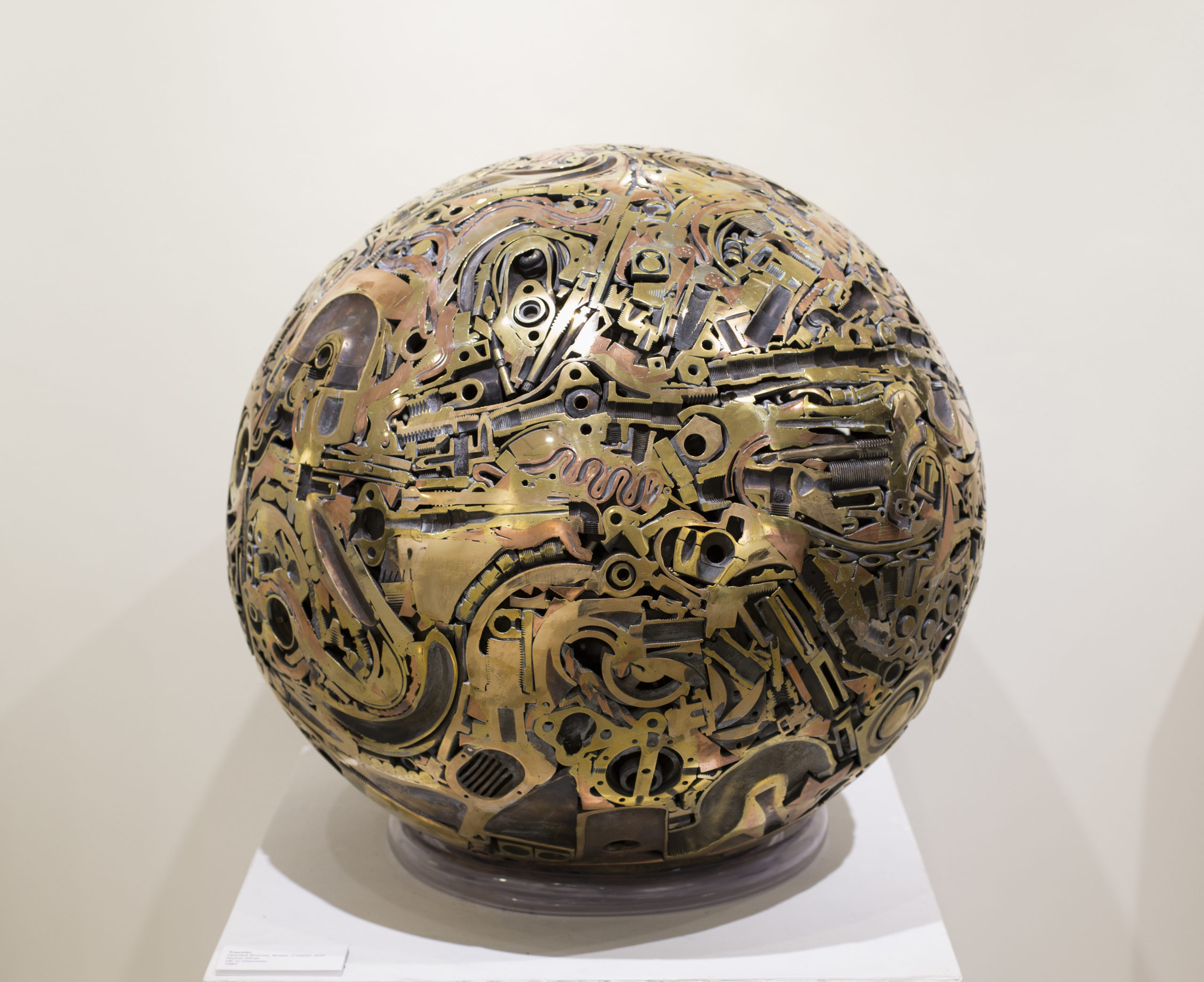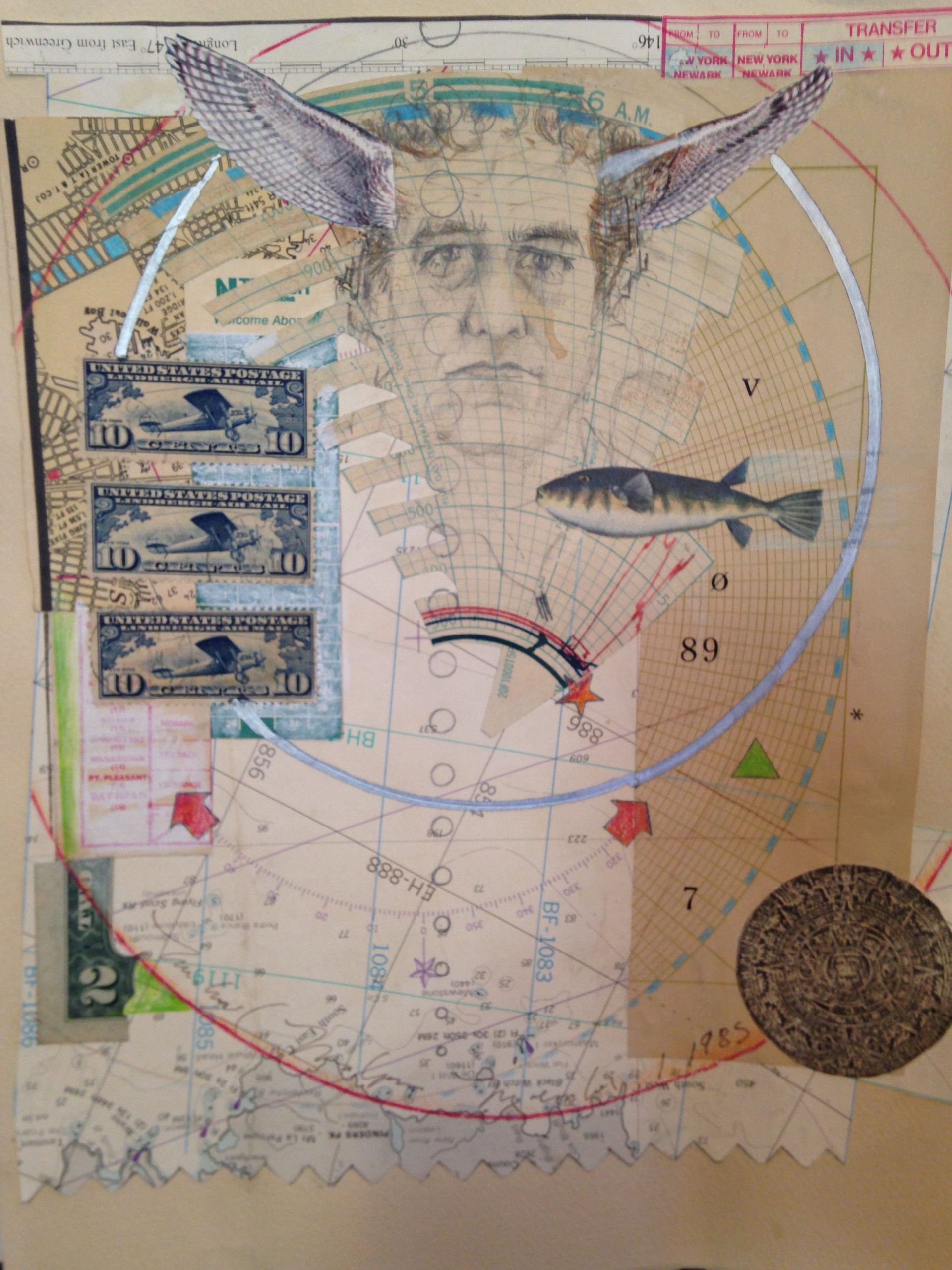
Michael Malpass (1946-1991) was a gentle giant, a man possessed of both great presence and immense strength who wielded these powers in the pursuit of beauty. Although his body of work also included drawings, collages, paintings and assemblages, he was best known for his sculpture, especially the spheres he forged from found industrial objects.
Working primarily with a bandsaw and employing traditional blacksmithing techniques, Malpass manipulated tons of metal, most often found at Brooklyn scrap yards, into his staggering collection of sculptures. He believed that “the sphere is the most perfect form” and allocated much of his artistic endeavors to exploring them, creating hundreds of variations on this theme throughout his illustrious career. His creativity in giving new life to forgotten materials, joined with his dedication and commitment to the pursuit of perfection, were awe-inspiring.
In the artist’s own words: “From the discards of society I simply try to create a beautiful object. I am definitely near the Rubicon, making shapes that no one has seen before, from metal used for thousands of years.”
Malpass was born in Yonkers, New York and began studying Fine Arts at the Pratt Institute in 1965. In the midst of soaking up influences such as Theodore Rozak, Arnoldo Pomodoro and Alberto Giacometti, he was drafted into the army during the Vietnam War. But his creativity and passion did not wane. Stationed in Berlin, and without access to art materials, he improvised by stretching old Army tents into canvasses and created collaged oil paintings of contemporary figures, including Janis Joplin, Jimi Hendrix and John Lennon.
After his military service, he returned to Pratt in 1972 as an instructor of welding and forge while concurrently completing his MFA. His artistic breakthrough occurred in 1977 with his first solo exhibition at The Betty Parsons Gallery in Manhattan, and just two years later Malpass found his work prominently featured on the cover of ARTnews (March, 1979). His career saw him continually broaden the scope of his creative efforts – at the time of his untimely death at forty-four he had at least 300 sculptures throughout the world, as well as various artworks spanning other mediums.
Malpass’s passion and strong tenderness extended to the relationships in his life. A loving husband, father and friend, he strived to be genuine in all his pursuits. He often said, “If you can find one good friend in this world consider yourself lucky. If you can find two, consider yourself blessed,” and it’s apparent that he blessed the lives of many – both personally and artistically – during his lifetime.



